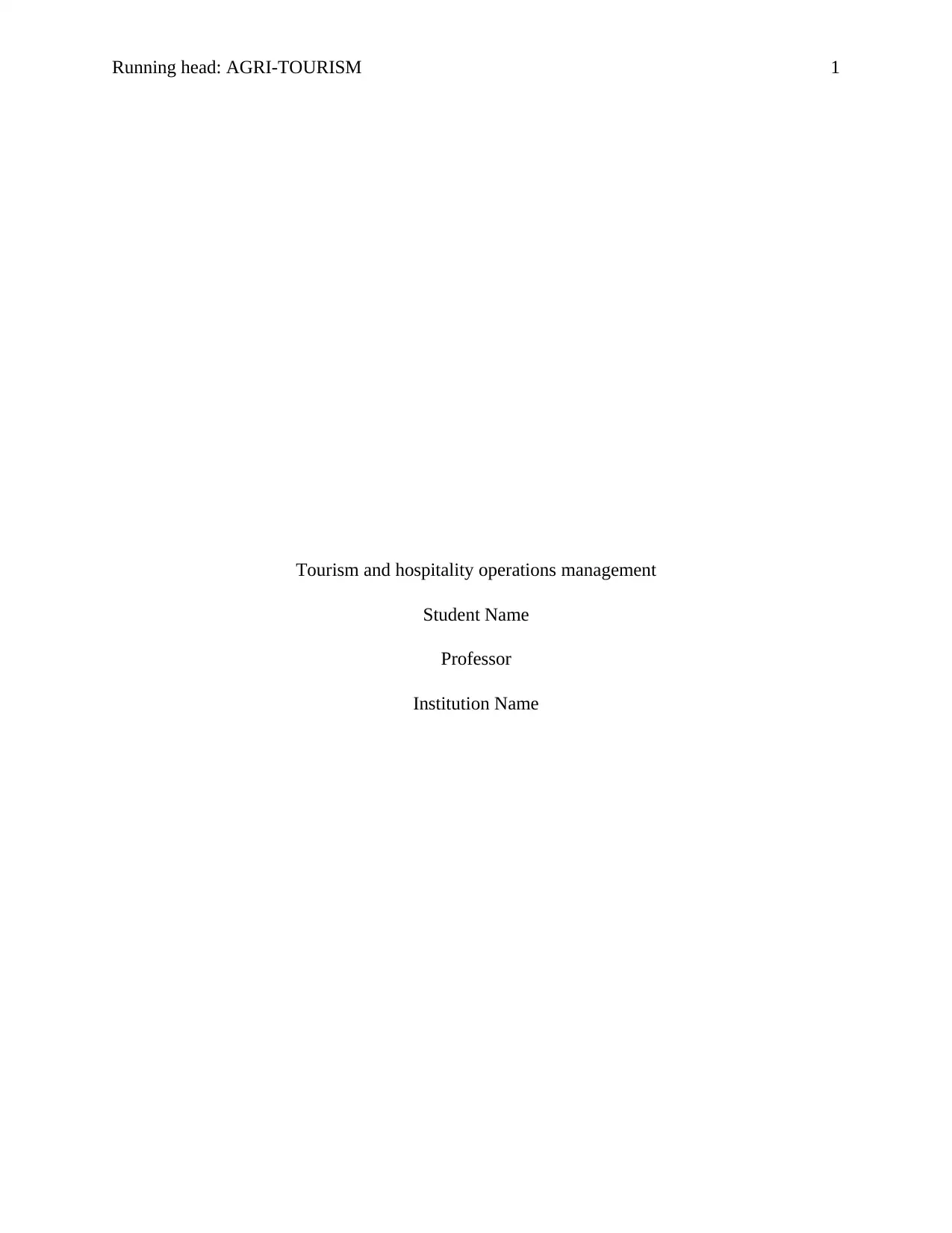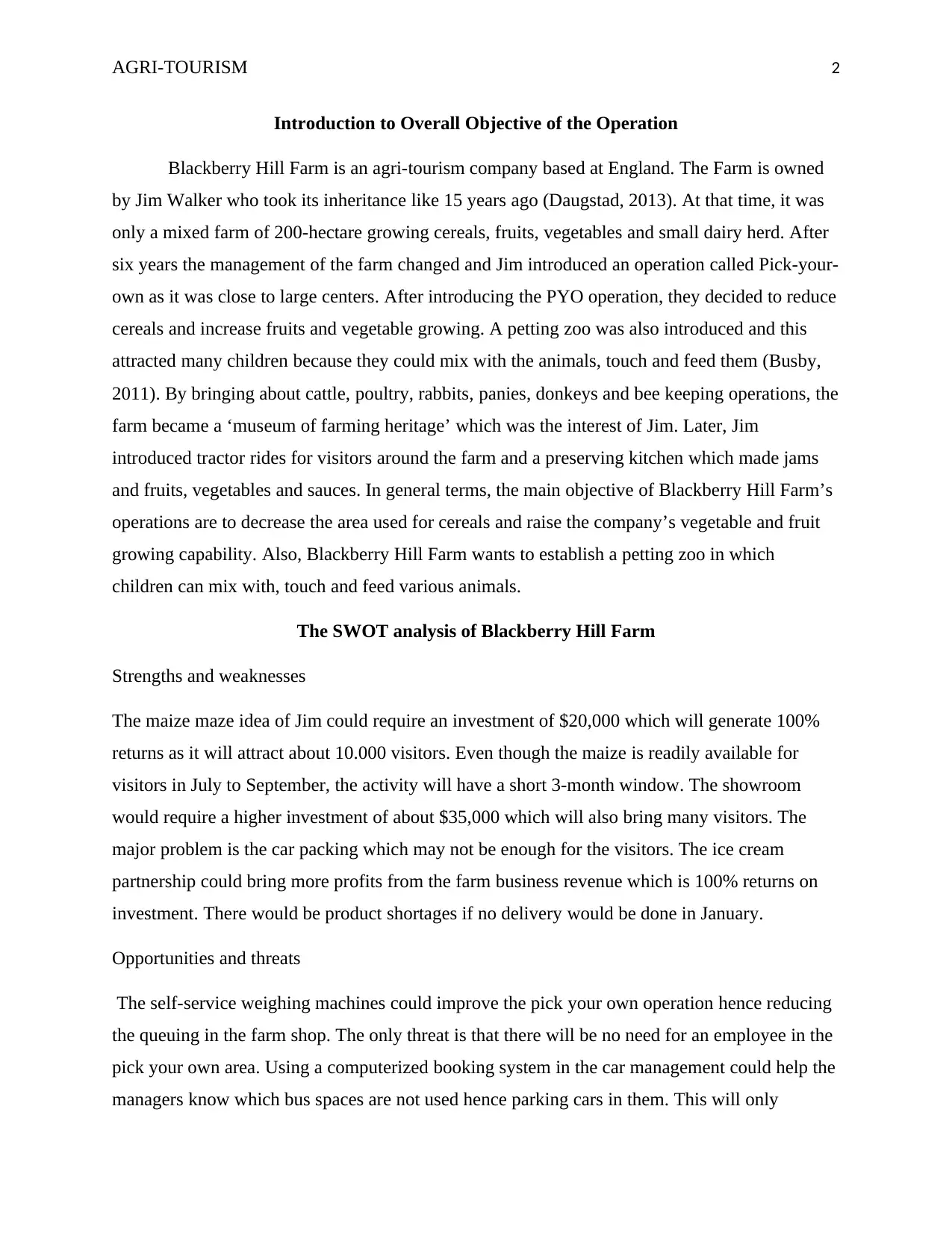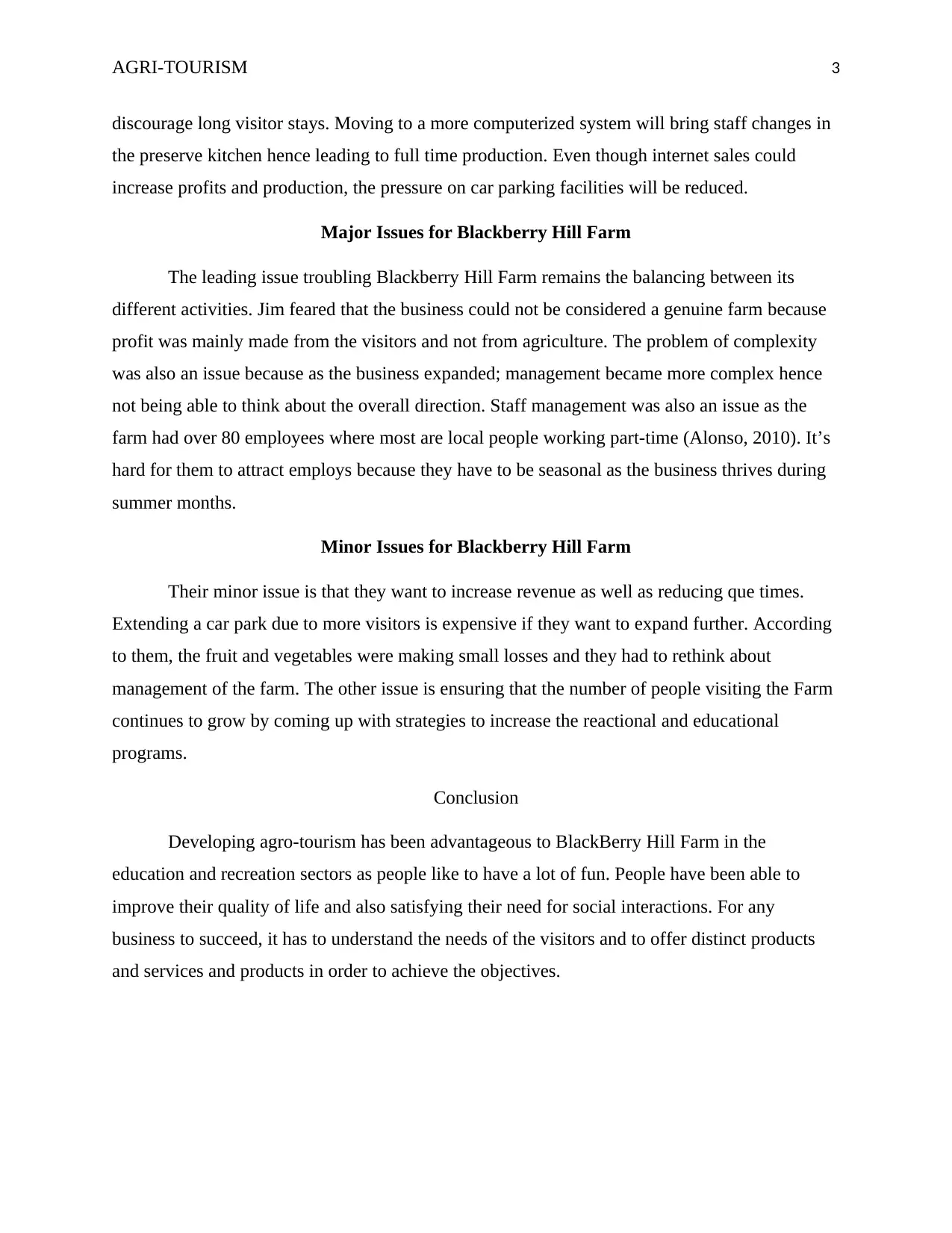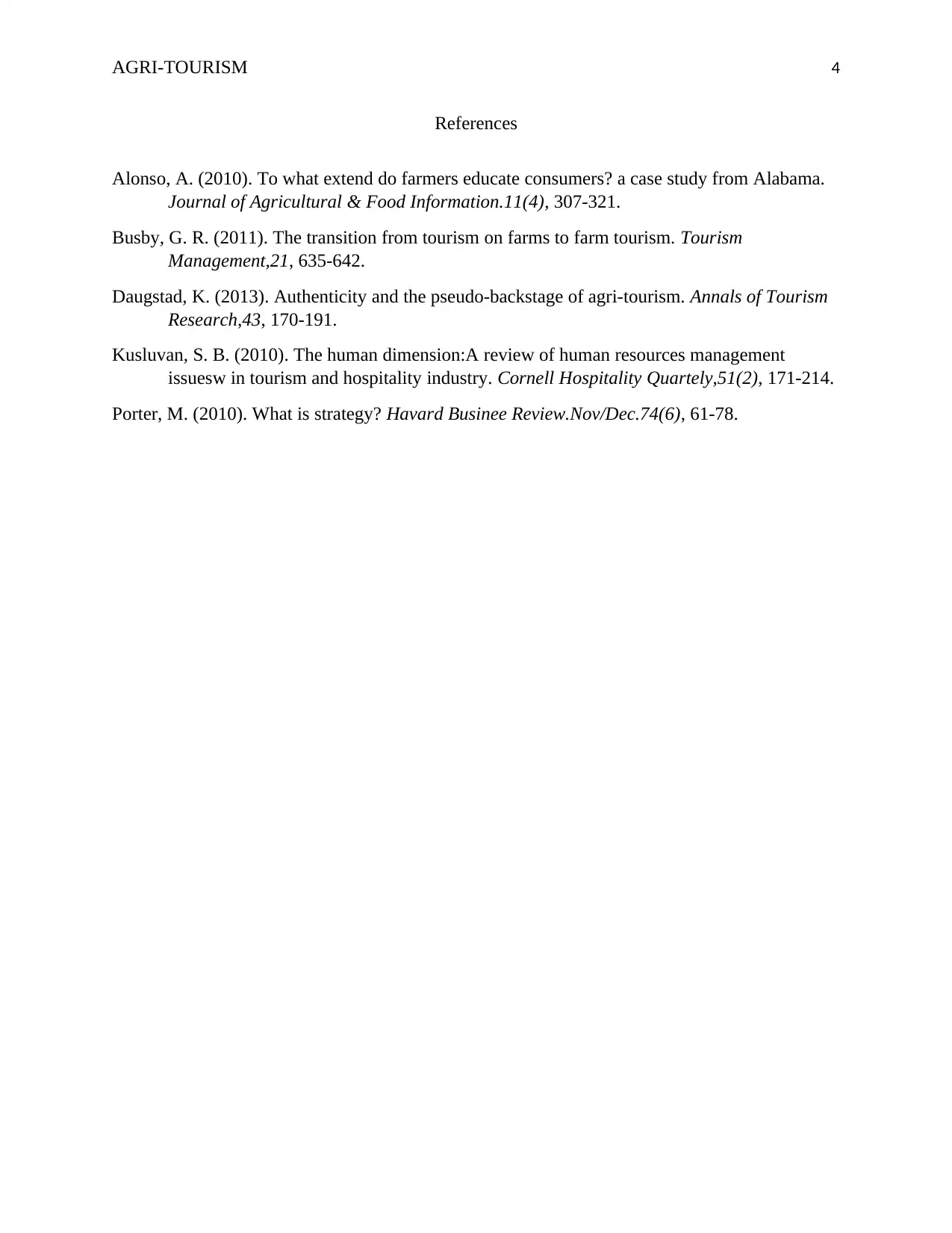Blackberry Hill Farm: Agri-Tourism Operations Analysis Report
VerifiedAdded on 2022/10/09
|4
|940
|46
Report
AI Summary
This report analyzes Blackberry Hill Farm, an agri-tourism business in England, focusing on its operations management. The introduction outlines the farm's evolution from a mixed farm to a diversified agri-tourism venture with pick-your-own operations, a petting zoo, and other attractions. The report details the farm's objectives, which include increasing fruit and vegetable production and establishing a petting zoo. A SWOT analysis examines the farm's strengths, such as the potential of a maize maze and ice cream partnership, and weaknesses, like car parking limitations. The report identifies major issues, including balancing different activities, the complexity of management, and staff management challenges. Minor issues include increasing revenue and reducing queue times. The analysis also provides insights into how the farm has adapted to meet visitor demands and the strategies used for recreational and educational programs. The report concludes by emphasizing the benefits of agri-tourism for education, recreation, and social interaction, highlighting the importance of understanding visitor needs to offer distinct services and products for business success.
1 out of 4







![[object Object]](/_next/static/media/star-bottom.7253800d.svg)